Imagine what it would be like to step inside a diamond. Everything is so vast, and the ceiling, walls and floor are sparkling. It’s absolutely breathtaking. That’s what spelunking is like for Katsuji Yoshida.
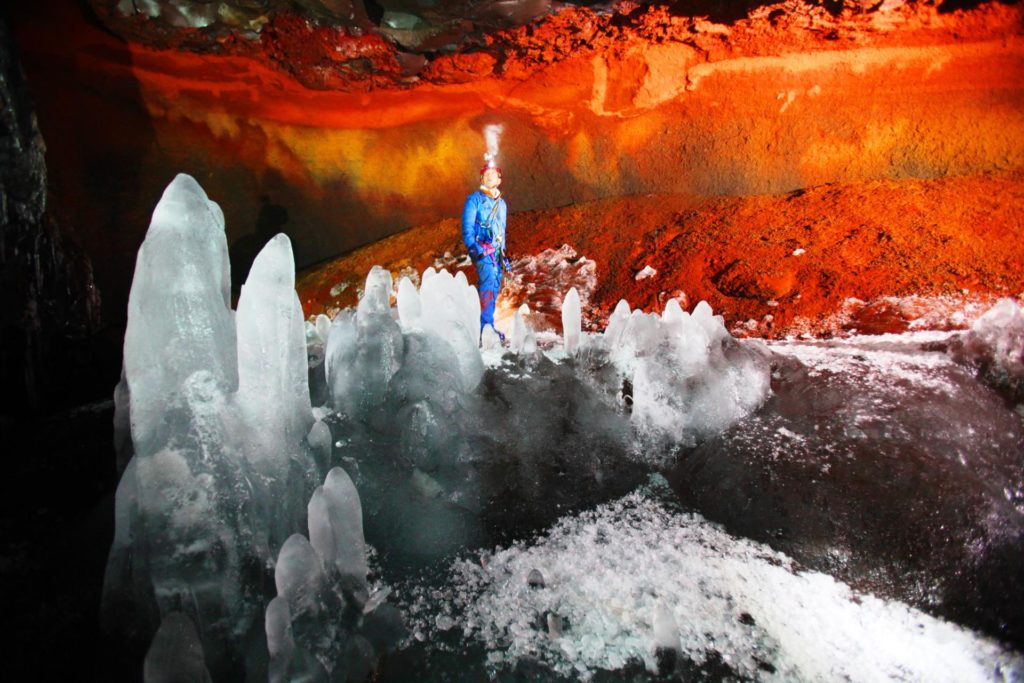
The 49-year-old Osaka native is one of Japan’s top cavers, having spent more than 20 years entrenched deep in caves peering into the unknown. Yoshida had always been exploring the outdoors, developing an early interest in caves and mountains back in elementary school. At age 23, he seriously pursued mountain trekking for a few years until he read an article on spelunking in a magazine.
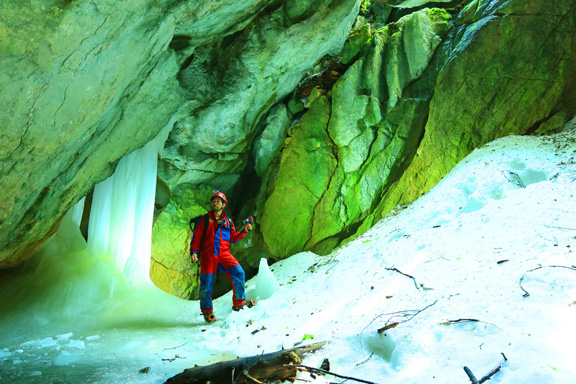
“Note that this was before the Internet era; I read this article, immediately called the phone number listed at the end of the piece and begged them to take me along on their next expedition,” he recalls.
Mentored by the Hamamatsu Caving Club, Yoshida joined expeditions to Aichi, Gifu, Shiga and Mie prefectures on a weekly basis. In three months, he was spelunking on his own and launched Japan Exploration Team, a group for explorers to not only learn the ropes to caving but also carry out rescue missions and navigation tactics.
“When you get lost or injured while hiking, helicopters and rescue teams can save you. But when you’re in a cave, you have to rely on your team. Learning how to discover caves is great, but rescue training is as essential. You have to do both well,” he states. Many of Yoshida’s expeditions take him to unusual and inaccessible locations, and the equipment he carries is mainly for emergency purposes. He always alerts people on his caving location, arranging “rescue times” in case he does not return by a certain hour.

Spelunkers in Japan are rare, as caving demands time-consuming research and rigorous physical training. It’s not a glamorous and immediately rewarding pastime, as days can be spent digging a wall and crawling in darkness just to find an opening.
Japan is teeming with caves, but it often takes time to find a way in, which can require weekly visits to the same location. Most Japanese can’t take off from work for month-long exploratory missions, yet Yoshida has made spelunking a full-time occupation, with regular paying gigs from magazines and TV programs supporting his passion for delving into dark places.
“I did not plan for it to be this way — it all developed naturally,” he explains. “I never turned down any opportunity, so more came down the line.” Yoshida’s accident-free track record has built trust and credibility as a professional spelunker, which has led to new opportunities for discovery.
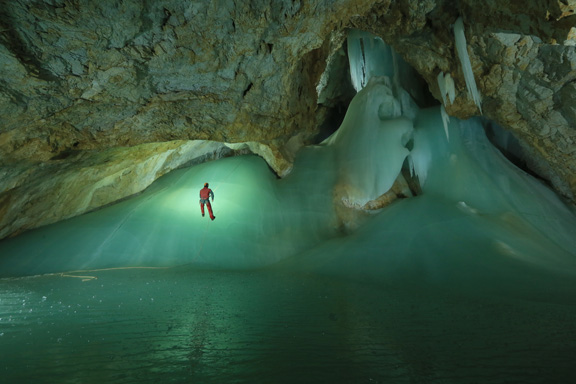
Wind and Water
Yoshida pulls out a laser tracker from his backpack, an essential tool as he purposely seeks caves that haven’t been explored before and creates trail maps along the way. Although there’s no guarantee of a pot of gold at the end—or in Yoshida’s case, an underground clearance—most of the time he can guess what kind of cave is inside simply by looking at the opening and studying cave formations.
“Wind and water are two elements I rely on for navigation. Wind being sucked into the cave is a result of the difference in temperature outside and inside the cave. If there’s water, I follow the flow. The good thing is even though cave openings are narrow, it usually leads to a bigger space,” he says and then demonstrates how he contorts his way through crevices using only his fingers and feet to maneuver.
While most of us might shudder at the thought of claustrophobia-inducing dirt passages, Yoshida is intrigued by the process—not knowing what is inside before suddenly entering a big underground world.
Once inside, Yoshida is prepared to face all sorts of terrain.
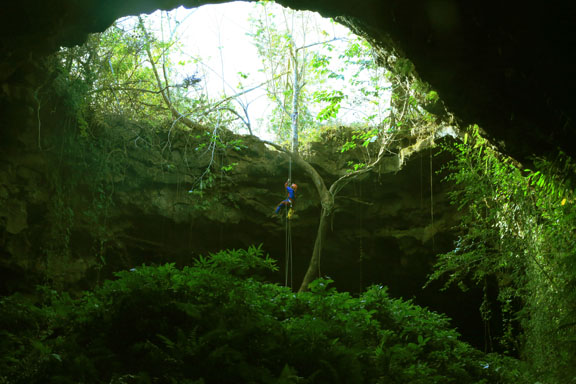
“For spelunking, you need to be active in a lot of outdoor activities or you won’t make it. We use ropes and prop ourselves against narrow walls and climb up and camp; this is called “chimneying.” Where there’s water, we either use rafts or scuba dive,” he explains.
It is easy to get caught up in enormous caverns and underground lakes, so Yoshida makes sure to keep track of what’s behind him to remember what the return route should look like. In fact, that’s all he thinks about when he’s underwater.
Spelunkers have to be mentally strong as well. Humans are wired to wake up or sleep based on sunlight, but usually the only light inside caves comes from cavers’ headlamps. Without natural light, it is difficult to rise, so Yoshida’s team takes turns waking each other every morning. “If we don’t, we’ll keep sleeping forever,” he jokes.
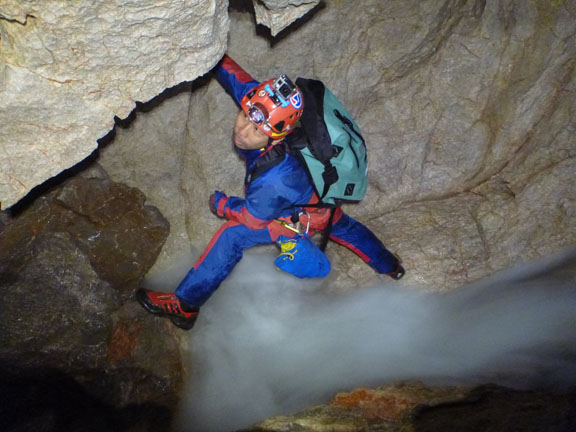
Because of the extreme situations, Yoshida says he breaks out in fevers almost once per expedition. During those times, there’s nothing else to do but sleep it off. “But by three days, I’m usually genki again,” he says optimistically.
He rarely brings water, drinking straight from underground rivers or gathering rainwater if he’s in the jungle. Lots of bugs are accidentally consumed. However, Yoshida makes sure he eats warm meals inside the cave.
“Aside from amazing cavern scenery, there’s really nothing else to look forward to while caving. You’re in narrow spaces, it’s freezing, and your body hurts.
But eating hot food refreshes you mentally,” he says.
What Lies Beneath
Caves operate on a completely different eco-system from the outside world. Temperatures remain consistent year-round. Tohoku’s caves are around five degrees Celsius, while Okinawa’s caves hover around 20-21 degrees.
Yoshida’s discoveries range from the mysterious, such as unusual and translucent fish, insects and tadpoles that lack eyes to adapt to their surroundings, to the alarming, a body belonging to an unfortunate spelunker who had gone missing the year before. Yoshida and his team had to haul out the body and report to the local Gifu police.
“Finding a body was the most surprising thing we’ve seen but, rather than being shocked, I respect these people who came before me, because they came first and so far,” Yoshida says.

He’s found bodies hundreds of years old and cultural remains of old villages, which adds to his anthropologic knowledge of the region. Along with the refrigerator-like temperature, caves lack decomposers usually found in other environments, so bodies and ruins remain preserved. Yoshida also makes sure to bring back all waste products, so the environment inside stays pristine and balanced. Today, Yoshida primarily explores limestone and volcanic caves and has been to 23 countries including Madagascar and Iran for caving. Currently, he has his eyes set on Laos, which apparently houses the world’s largest cave. So far, he’s explored about 2.5 kilometers of passages by following a subterranean river. Even though he is approaching his 50th birthday, his passion does not flicker.
“I think I will cave forever. I’ll probably die in a cave and someone will find me there,” he says matter of factly.
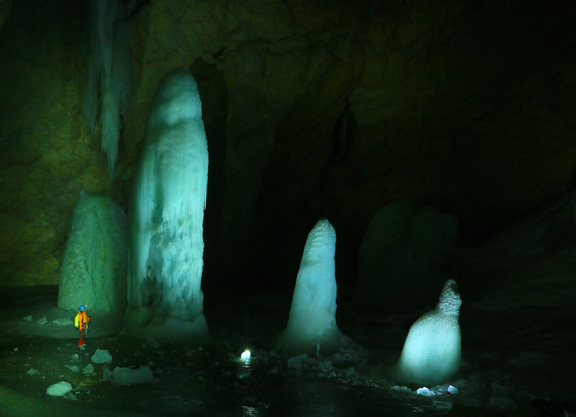
Yoshida sums up his caving experience in one word – michi, which means path.
“Deep oceans, space and the underground, these are three areas left uncharted. I have no interest in caves people have already been to,” he says. “I like not knowing what’s ahead of me.”
Yoshida continues to be a pioneer, paving a new michi in places no one has ever been before.




